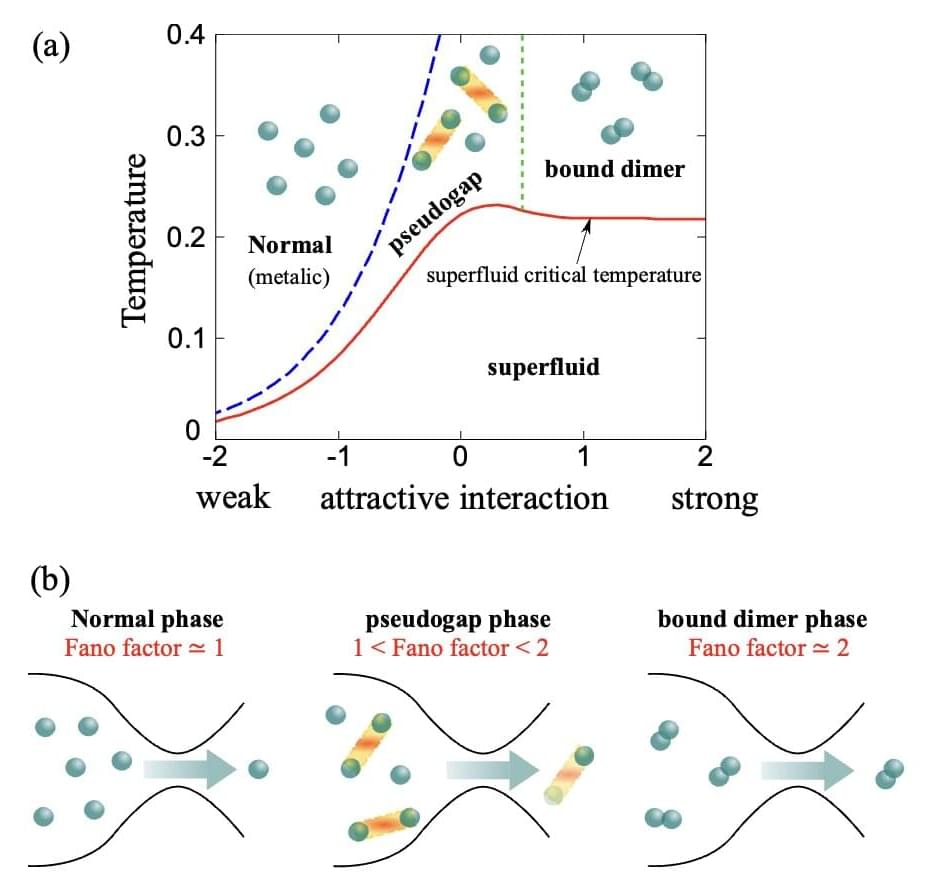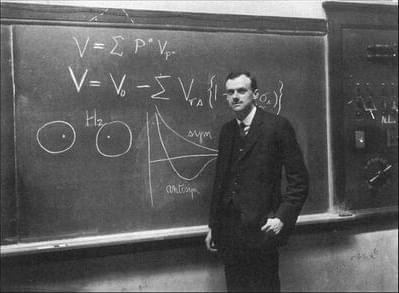A research team’s milestone could help realize efficient electrical grids, better battery life for cellphones and improving nuclear fusion.



If you cool down low-density atomic gas to ultralow temperatures (−273°C), you get a new state of matter called the Bose-Einstein Condensate (BEC). A BEC has strongly coupled two-atom molecules behaving like a collective wave following quantum mechanics. If you reduce the pairing strength between them—for example, by increasing the magnetic field—the atoms form Cooper pairs according to Bardeen-Cooper-Schrieffer (BCS) theory (which won a Nobel Prize).
The process is called BCS-BEC crossover. And the theory forms the basis of superfluids and superconductors, materials that do not display viscosity or electrical resistance. Hiroyuki Tajima and his team from the University of Tokyo proposed a new method to distinguish current carriers in the BCS-BEC crossover. The key is in the fluctuations of current.
Electronic devices display images thanks to electrons moving in a conductor—aka single-particle current. Your device may heat up due to the resistance caused by collisions of electrons in the conductor that dissipate electric energy as heat. But superconductors show zero resistance to current flow, saving lots of energy. This is possible because of paired electrons, which would have otherwise repelled each other due to their negative charge. In other words, the current in superconductors is mainly due to the pair-tunneling transport involving moving paired-current carriers rather than a single-particle current carrier.

The researchers used instruments known as optical traps to throw and catch individual atoms. Scientists have created what they describe as “the world’s smallest ball game with atoms”. Researchers in South Korea have made atoms – the smallest unit of matter – move like balls through the air using a technology known as optical traps.


A comet that will make a (somewhat) close approach to the Earth in September 2024 is already creating excitement among amateur astronomers. Comets are unpredictable beasts, and a great many have proven disappointing – but C/2023 A3 (Tsuchinshan-ATLAS) has many of the characteristics required to put on the best display for at least a decade.
Comets visit the inner solar system quite frequently, but few can be seen with the naked eye. Most are either regular visitors (short period) that have been slowly losing material on previous approaches to the Sun and don’t have enough left to be very bright. Others never get close enough to Earth to put on a show.
Tsuchinshan-ATLAS passes both those tests. Its orbit is so long it there is debate as to whether it visited the inner solar system 80,000 years ago, or if it never has. At closest approach, it will be 58 million kilometers (36 million miles) or just under 0.39 AU (Earth-Sun distance) from the Earth.
The mission to return humans to the Moon is moving on to its next phase, NASA has announced. While reporting the current analysis of the successful uncrewed Artemis I mission, the agency revealed when the first crewed mission will take place.
Artemis I was the first test flight for NASA’s megarocket Space Launch System (SLS) and Orion spacecraft and spent 25.5 days in space. Artemis II will be the first crewed flight to the Moon before Artemis III actually lands on the lunar surface.
NASA revealed that as the Orion capsule successfully survived Earth reentry without burning up, the next launch is now expected for November 2024. The four-astronaut crew, including one Canadian, will be announced later this year.

Iwas never into house plants until I bought one on a whim—a prayer plant, it was called, a lush, leafy thing with painterly green spots and ribs of bright red veins. The night I brought it home I heard a rustling in my room. Had something scurried? A mouse? Three jumpy nights passed before I realized what was happening: The plant was moving. During the day, its leaves would splay flat, sunbathing, but at night they’d clamber over one another to stand at attention, their stems steadily rising as the leaves turned vertical, like hands in prayer.
“Who knew plants do stuff?” I marveled. Suddenly plants seemed more interesting. When the pandemic hit, I brought more of them home, just to add some life to the place, and then there were more, and more still, until the ratio of plants to household surfaces bordered on deranged. Bushwhacking through my apartment, I worried whether the plants were getting enough water, or too much water, or the right kind of light—or, in the case of a giant carnivorous pitcher plant hanging from the ceiling, whether I was leaving enough fish food in its traps. But what never occurred to me, not even once, was to wonder what the plants were thinking.
To understand how human minds work, he started with plants.
See my site’s section on movies and transhumanism:
http://www.truefreethinker.com/movies.
~~~~~~~~~~~~~~
You can visit me here:
True Freethinker:
http://www.truefreethinker.com.
Backup video channel:
https://archive.org/details/@ken_ammi.
Facebook:
http://www.facebook.com/pages/True-Freethinker/121114521301654
Twitter:

Most galaxies seemed to be missing a huge proportion of the matter we expected them to have – now researchers may have found its hiding spot, but the discovery contradicts accepted models of galaxy formation.
By Leah Crane
